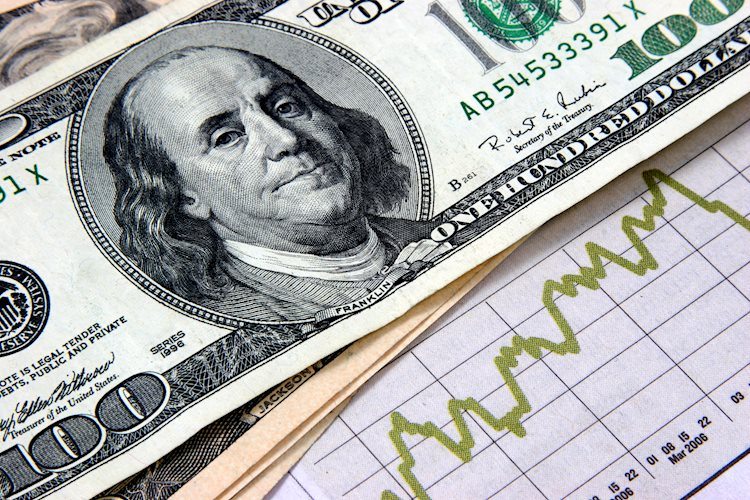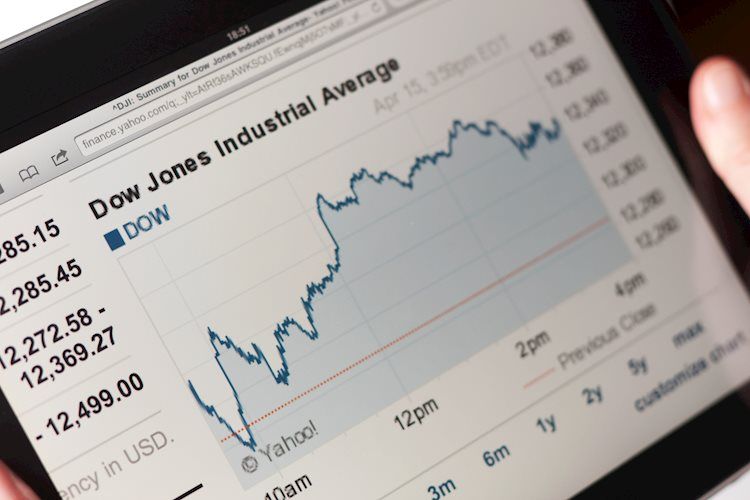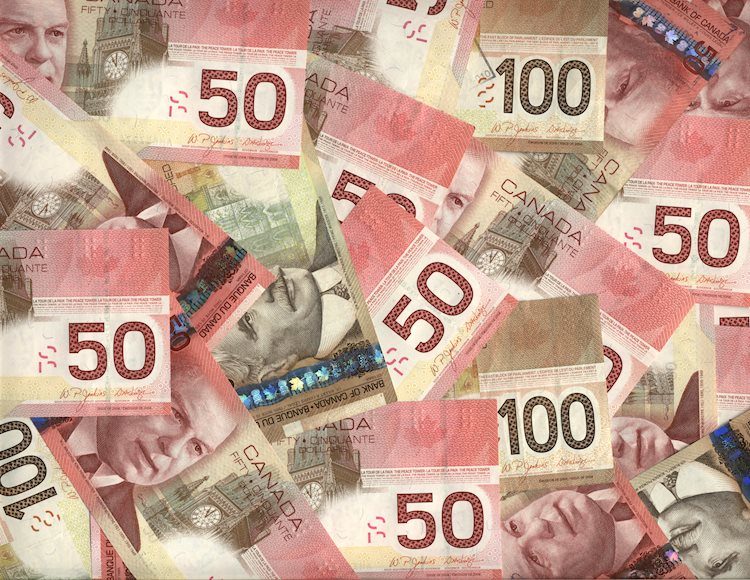A modest USD downtick helps limit the downside amid persistent geopolitical tensions.
Traders also seem reluctant ahead of the FOMC meeting and key US macro data this week.
Gold price (XAU/USD) struggles to capitalize on its modest gains registered over the past two trading days and oscillates in a narrow trading band during the early European session on Monday. The US Personal Consumption Expenditures (PCE) Price Index released on Friday pointed to still sticky inflation and reaffirmed market expectations that the Federal Reserve (Fed) will keep interest rates higher for longer. This, along with a generally positive tone around the equity markets, turns out to be a key factor undermining demand for the safe-haven precious metal.
Meanwhile, the US Dollar (USD) comes under some renewed selling pressure and hangs near a two-week low touched on Friday amid a sharp recovery in the Japanese Yen (JPY), bolstered by a possible government intervention. Apart from this, persistent geopolitical tensions stemming from the protracted Russia-Ukraine war and Israel-Hamas conflict act as a tailwind for the safe-haven Gold price. Traders might also prefer to wait on the sidelines ahead of a two-day FOMC meeting starting on Tuesday and this week’s key US macro data, including the Nonfarm Payrolls (NFP) report.
The US Bureau of Economic Analysis reported on Friday that the Personal Consumption Expenditures (PCE) Price Index rose 0.3% in March, while the yearly rate climbed to 2.7% from 2.5% in February, beating estimates for a reading of 2.6%.
Meanwhile, the core PCE Price Index, which excludes volatile food and energy prices, held steady at 2.8% as compared to 2.6% anticipated, reaffirming hawkish Federal Reserve expectations and exerting pressure on the non-yielding Gold price.
Further, Israel-Hamas peace talks in Cairo fuel optimism about the de-escalation of tensions in the Middle East, which further boosts investors’ appetite for riskier assets and contributes to driving flows away from the safe-haven precious metal.
That said, Ukraine attacked more Russian oil refineries over the weekend and also called on more military aid from the US over worsening conditions on the front lines, keeping geopolitical risks in play and lending support to the XAU/USD.
Apart from this, evidence that inflation in the US is not easing as initially expected should act as a tailwind for the metal, which is seen as a hedge against inflation, ahead of the crucial two-day FOMC monetary policy meeting starting on Tuesday.
Investors this week will also confront the release of important US macro data scheduled at the beginning of a new month, including the closely-watched monthly jobs data – popularly known as the Nonfarm Payrolls (NFP) report on Friday.
From a technical perspective, last week’s bounce from levels below the $2,300 mark faced rejection near the $2,352-2,353 confluence comprising the 50% Fibonacci retracement level of the recent pullback from the all-time peak and the 200-hour Simple Moving Average (SMA). The subsequent downfall, however, showed some resilience below the 100-hour SMA and stalled near the $2,320 area (23.6% Fibo. level), which should now act as a key pivotal point. A sustained break below could make the Gold price vulnerable to retesting last week’s swing low, around the $2,292-2,291 region, before dropping to the next relevant support near the $2,268-2,265 zone.
On the flip side, bulls need to wait for a move beyond the $2,352-2,353 confluence hurdle before placing fresh bets. The Gold price might then accelerate the positive move towards the next relevant hurdle near the $2,371-2,372 region en route to the $2,400 round figure. The momentum could extend further towards the all-time peak, around the $2,431-2,432 area touched earlier this month.
In the world of financial jargon the two widely used terms “risk-on” and “risk off” refer to the level of risk that investors are willing to stomach during the period referenced. In a “risk-on” market, investors are optimistic about the future and more willing to buy risky assets. In a “risk-off” market investors start to ‘play it safe’ because they are worried about the future, and therefore buy less risky assets that are more certain of bringing a return, even if it is relatively modest.
Typically, during periods of “risk-on”, stock markets will rise, most commodities – except Gold – will also gain in value, since they benefit from a positive growth outlook. The currencies of nations that are heavy commodity exporters strengthen because of increased demand, and Cryptocurrencies rise. In a “risk-off” market, Bonds go up – especially major government Bonds – Gold shines, and safe-haven currencies such as the Japanese Yen, Swiss Franc and US Dollar all benefit.
The Australian Dollar (AUD), the Canadian Dollar (CAD), the New Zealand Dollar (NZD) and minor FX like the Ruble (RUB) and the South African Rand (ZAR), all tend to rise in markets that are “risk-on”. This is because the economies of these currencies are heavily reliant on commodity exports for growth, and commodities tend to rise in price during risk-on periods. This is because investors foresee greater demand for raw materials in the future due to heightened economic activity.
The major currencies that tend to rise during periods of “risk-off” are the US Dollar (USD), the Japanese Yen (JPY) and the Swiss Franc (CHF). The US Dollar, because it is the world’s reserve currency, and because in times of crisis investors buy US government debt, which is seen as safe because the largest economy in the world is unlikely to default. The Yen, from increased demand for Japanese government bonds, because a high proportion are held by domestic investors who are unlikely to dump them – even in a crisis. The Swiss Franc, because strict Swiss banking laws offer investors enhanced capital protection.
Share:
Feed news
Information on these pages contains forward-looking statements that involve risks and uncertainties. Markets and instruments profiled on this page are for informational purposes only and should not in any way come across as a recommendation to buy or sell in these assets. You should do your own thorough research before making any investment decisions. FXStreet does not in any way guarantee that this information is free from mistakes, errors, or material misstatements. It also does not guarantee that this information is of a timely nature. Investing in Open Markets involves a great deal of risk, including the loss of all or a portion of your investment, as well as emotional distress. All risks, losses and costs associated with investing, including total loss of principal, are your responsibility. The views and opinions expressed in this article are those of the authors and do not necessarily reflect the official policy or position of FXStreet nor its advertisers. The author will not be held responsible for information that is found at the end of links posted on this page.
If not otherwise explicitly mentioned in the body of the article, at the time of writing, the author has no position in any stock mentioned in this article and no business relationship with any company mentioned. The author has not received compensation for writing this article, other than from FXStreet.
FXStreet and the author do not provide personalized recommendations. The author makes no representations as to the accuracy, completeness, or suitability of this information. FXStreet and the author will not be liable for any errors, omissions or any losses, injuries or damages arising from this information and its display or use. Errors and omissions excepted.
The author and FXStreet are not registered investment advisors and nothing in this article is intended to be investment advice.





